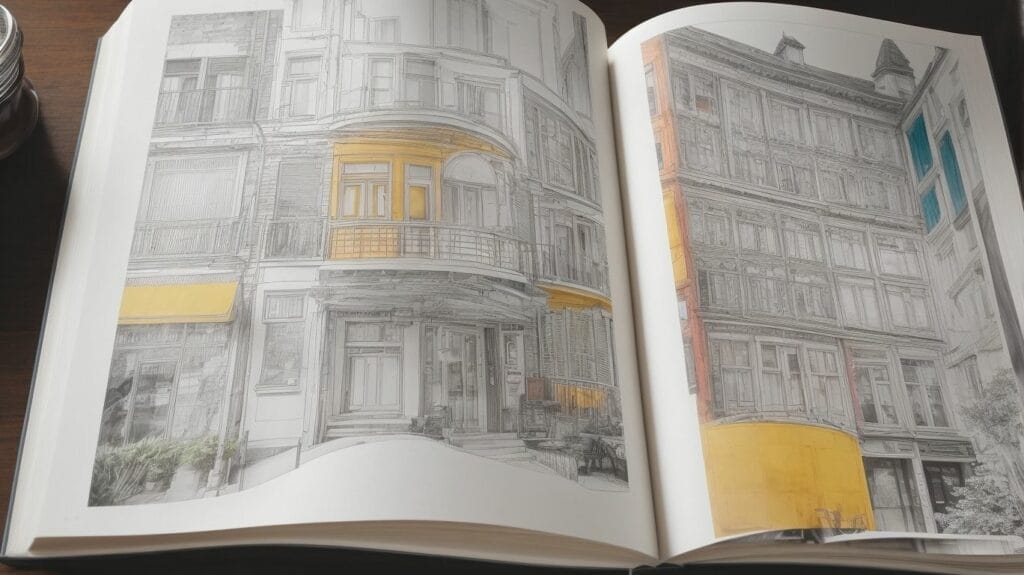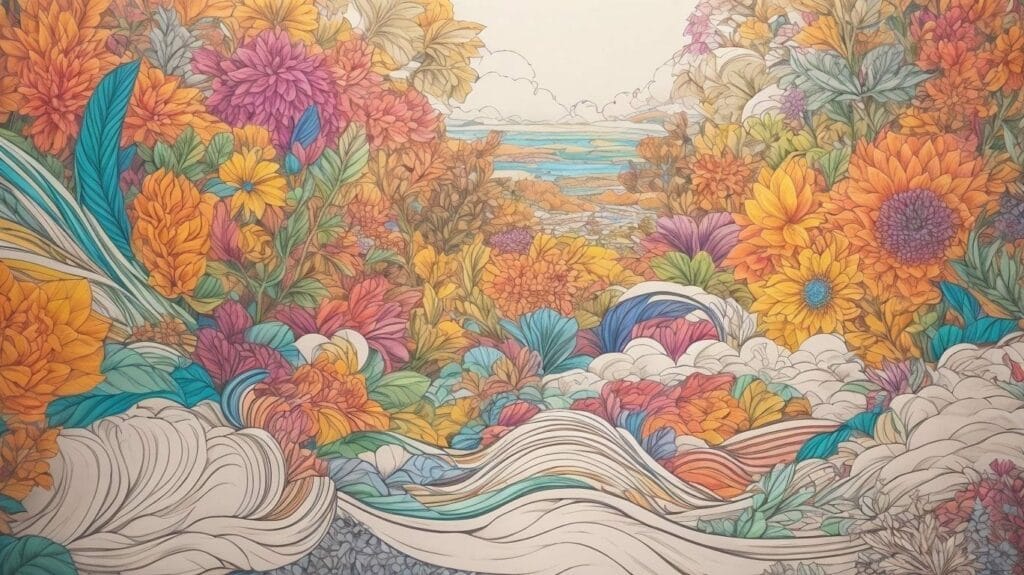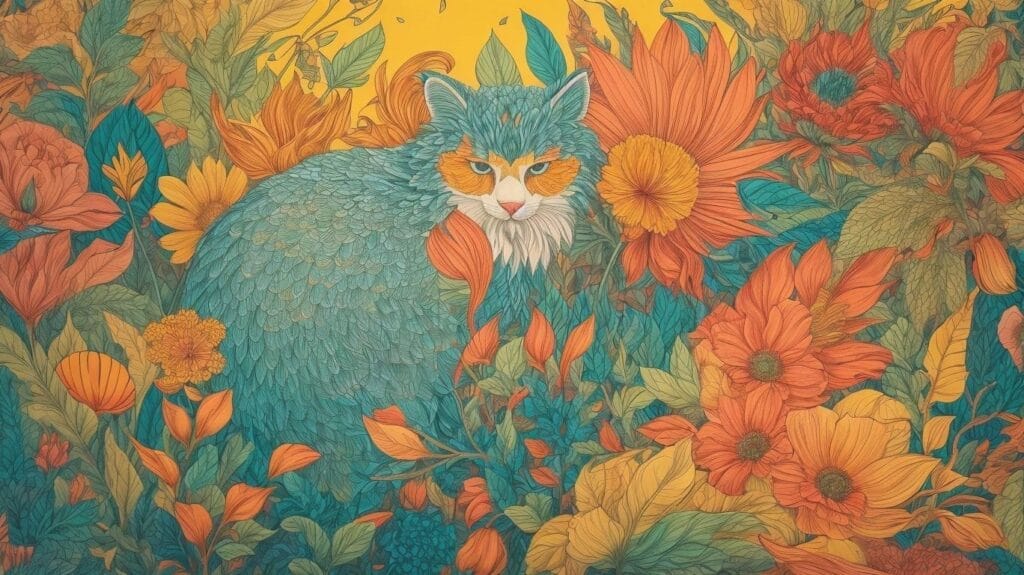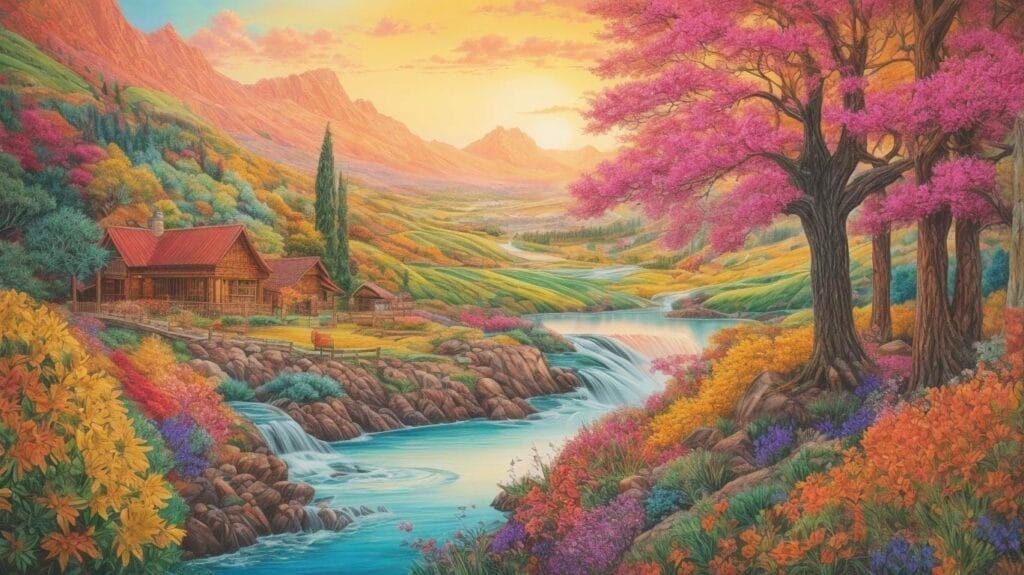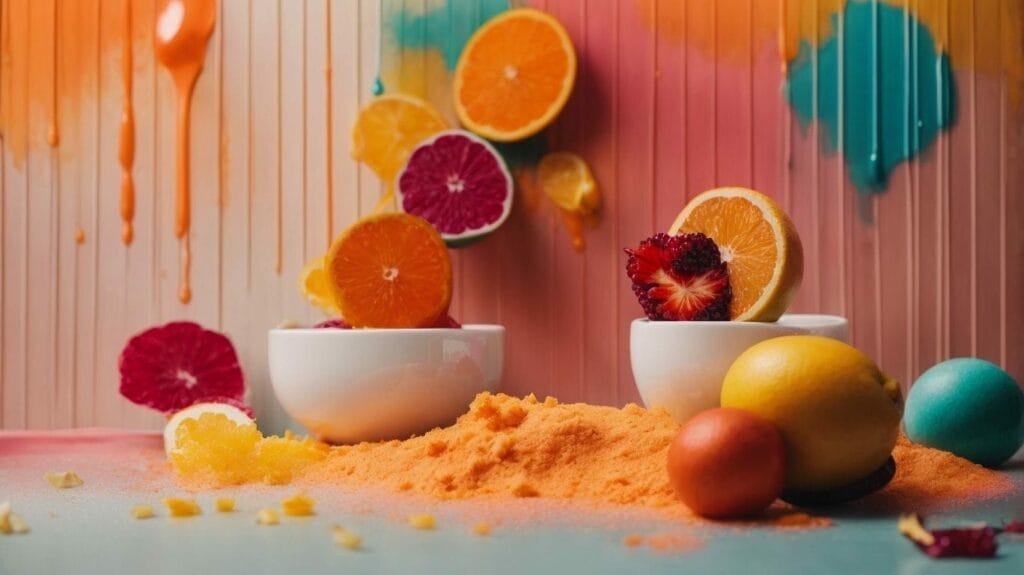Are you ready to take your coloring pages to the next level? Choosing the right colors can make a world of difference in bringing your designs to life. In this comprehensive guide, we will explore various techniques and tips for selecting the perfect colors for your coloring pages. Whether you’re a beginner looking for inspiration or a seasoned artist seeking to refine your skills, this article has something for everyone.
From learning about color theory to creating color swatches and using color palettes, we’ll cover it all. So, if you’re ready to enhance your coloring experience and unleash your creativity, let’s dive into the fascinating world of color selection for coloring pages.
Key Takeaways:
- Find inspiration for your coloring page from various sources, such as nature, art, or everyday objects.
- Use a color palette to ensure your coloring page has a cohesive and aesthetically pleasing color scheme.
- Learn about color theory to understand how different colors work together and create visual harmony on your coloring page.
How to Choose Colors for a Coloring Page
Choosing the right colors for a coloring page is a crucial aspect of the creative process, and it can greatly influence the overall impact and aesthetic appeal of the artwork. Whether it’s for adult coloring books or personal art projects, understanding how to select colors effectively is essential for achieving a visually captivating result.
Color selection goes beyond mere aesthetics; it has the power to evoke emotions, set the tone, and convey a specific mood within a piece of art. The color palette chosen can transform a mundane line drawing into a dynamic and engaging illustration.
Artists often draw inspiration from nature, diverse cultures, or personal experiences when choosing their color schemes while also considering the principles of color theory. Techniques such as experimenting with complementary or analogous colors, creating gradients, and varying the intensity of hues can add depth and dimension to the artwork.
Finding Inspiration

Credits: Loststorystudios.Com – Jerry Brown
Exploring sources of inspiration is an integral part of the color selection process, whether it involves drawing from the vibrant hues of nature, seeking inspiration from design magazines and catalogs, or leveraging the diverse array of online resources available for color palettes and combinations.
Use a Color Palette
Employing a color palette serves as a fundamental tool for artists and designers, enabling the systematic organization and exploration of color combinations while adhering to principles of color theory such as monochromatic, analogous, and complementary schemes.
Learn about Color Theory
Acquiring knowledge of color theory is essential for understanding the properties and interactions of different colors, including the concepts of warm, cool, and neutral tones, as well as the application of shading techniques to create depth and dimension within a coloring page.
Take on a Challenge
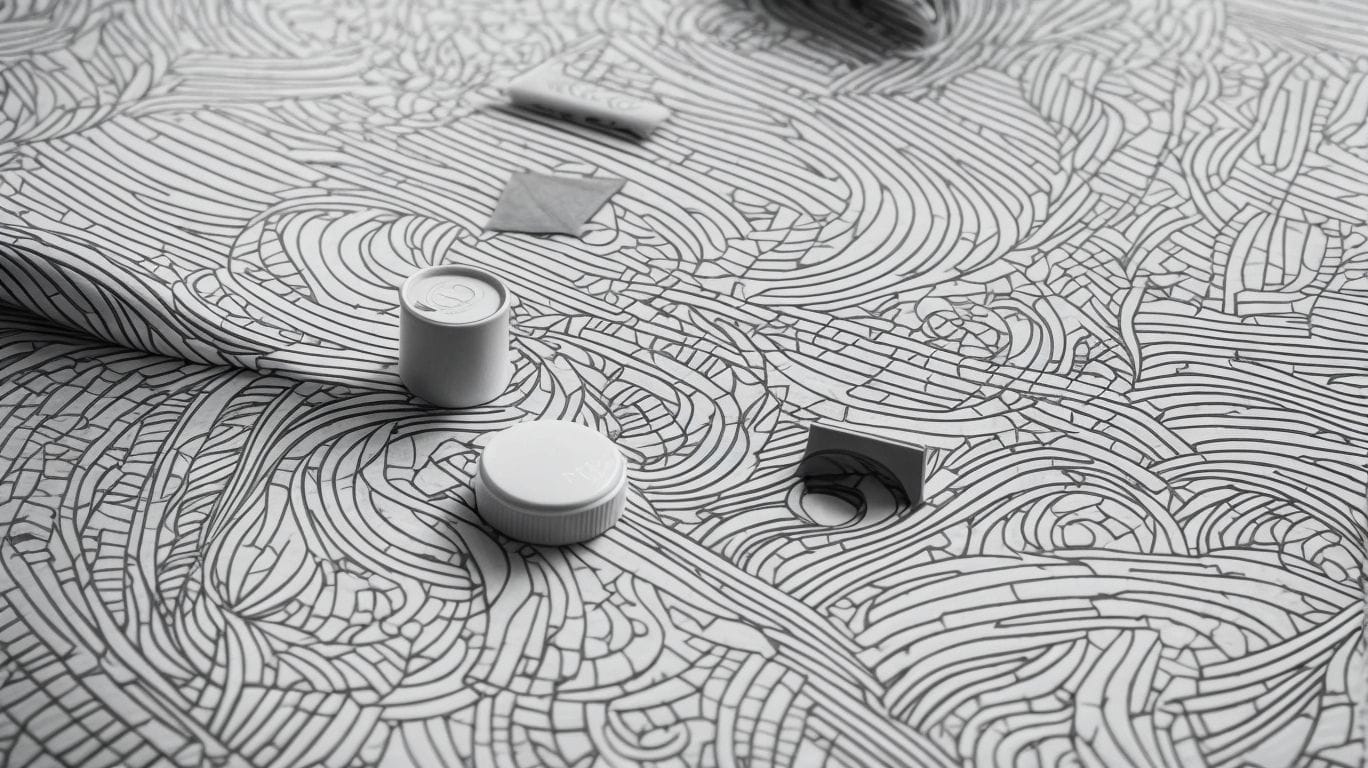
Credits: Loststorystudios.Com – Austin Thomas
Challenging oneself to explore new color combinations and techniques can be a rewarding and stress-relieving endeavor, especially when utilizing high-quality coloring tools such as Prismacolor Premier, Faber-Castell Polychromos, Caran d’Ache Luminance, and Black Widow to elevate the artistic experience.
Shades and Highlights
Mastering the art of creating shades and highlights through the use of coloring mediums like Derwent Colorsoft, Derwent Inktense, Copic Sketch, and Ohuhu markers can significantly elevate the visual impact and depth of a coloring page, enhancing the overall artistic expression.
Pick at Random
Embracing a random color selection approach can lead to surprising and innovative color combinations, fostering an organic and spontaneous creative process, especially when experimenting with versatile tools like Spectrum Noir markers and Tombow Dual Brush Pens.
Create Color Swatches
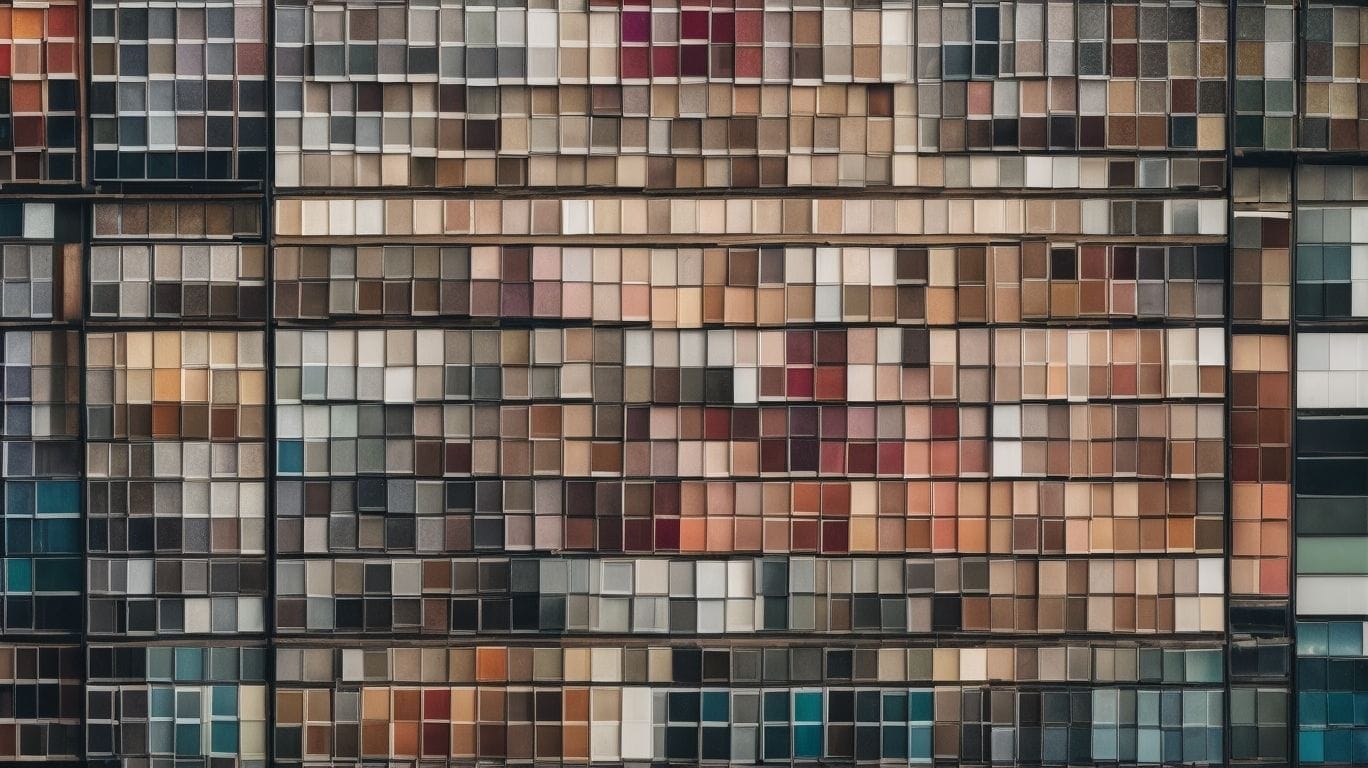
Credits: Loststorystudios.Com – Jason Campbell
Developing color swatches is a valuable practice for artists and designers, providing a tangible reference for exploring and organizing color combinations and drawing inspiration from various sources to curate a personalized palette that reflects the individual’s artistic vision and style.
How to Use a Color Palette

Credits: Loststorystudios.Com – John Nelson
Effectively utilizing a color palette, whether through digital tools like Goodnotes or specialized resources like the Color Catalog and Color Catalog Companion, can streamline the color selection process and enhance the overall efficiency and creativity in art and design projects.
Share this post
Sharing this post with fellow art enthusiasts, designers, and anyone passionate about the creative use of colors can spark valuable discussions and insights, contributing to a vibrant exchange of ideas and strategies for effective color utilization in various artistic endeavors.
Engaging in such dialogues has the potential to foster creativity and innovation as individuals share their perspectives and experiences with color theory, symbolism, and psychology.
By encouraging sharing within your social circles, you can play a role in enriching the collective understanding of how to wield color as a powerful tool in design, marketing, and visual communication.
Utilize the platform provided here to share your thoughts, pose questions, and explore new horizons in the dynamic world of color, inspiring others to do the same.
Comments
Engaging with the vibrant community through comments can lead to valuable exchanges of insights, experiences, and creative approaches to color selection, fostering a dynamic and interactive platform for discussing the diverse aspects of art, design, and color theory.
When discussing color selection, it’s fascinating to explore the impact of different hues and shades in various contexts, from interior design to digital art. It’s intriguing how colors evoke emotions and convey messages, influencing our perceptions and experiences. Sharing personal encounters with specific colors or seeking advice on harmonizing palettes can inspire others and open doors to multifaceted discussions.
Your thoughts and experiences add depth to our collective pool of knowledge about colors, enhancing our understanding of their roles in creativity and self-expression.
Leave a Comment Cancel reply.
Although the option to leave a comment is available, readers have the freedom to engage in dynamic discussions, share their perspectives, and contribute to a collaborative exploration of color-related topics in the context of art, design, and creative expression.
When readers participate by leaving comments, they not only express their viewpoints but also enrich the content with diverse insights, experiences, and knowledge. This fosters a sense of shared exploration and discovery, making the platform an inclusive space that values audience interaction.
By engaging in productive discussions about color selection, readers can learn from each other, gain a deeper understanding of color theory, and discover innovative ways to apply color palettes in their artistic and design endeavors. This organic exchange of ideas creates a vibrant community that thrives on mutual learning and creativity.
About Garden Therapy
Garden Therapy provides a rich and diverse array of online resources, including valuable insights, tutorials, and inspiration for individuals interested in exploring the creative potential of colors within the realms of art, design, and personal expression.
The platform offers a wide range of content, such as color theory guides, step-by-step tutorials for color mixing techniques, and DIY projects that harness the vivid palette of nature. Whether you’re a beginner seeking guidance on harmonizing color schemes or an experienced artist looking for fresh inspiration, Garden Therapy caters to all levels of expertise, fostering a supportive community that encourages experimentation and celebrates the visually captivating world of colors.
Stay in Touch
Staying in touch with the creative community and accessing regular updates, insights, and resources related to coloring, art, and design can enrich the artistic journey and foster meaningful connections within a vibrant and supportive network of passionate individuals.
Subscribing to newsletters and joining online forums can keep you updated on the latest trends, techniques, and events in the art world. Connecting with like-minded artists and designers creates an enriching environment for exchanging ideas and gaining inspiration. By staying engaged in this dynamic community, you can explore new avenues of creativity and elevate your art and design endeavors to new heights.
Embracing this collaborative spirit not only enhances individual growth but also contributes to the collective evolution of the artistic landscape.
You may also like…
Exploring related content and thematic recommendations can offer valuable insights, new perspectives, and inspiration for delving deeper into the world of coloring, art, and design, broadening the creative horizons and nurturing a diverse range of color-related interests.
Whether you’re seeking inspiration for color harmonies in your artwork, exploring the psychological effects of color palettes in design, or discovering the cultural significance of color symbolism across different civilizations, engaging with diverse content can provide a rich tapestry of knowledge and creative stimulation.
From examining the history of pigments to experimenting with color theory in mixed media, each exploration opens doors to new possibilities, fueling your artistic journey and enhancing the depth of your color-related creative pursuits.
Make your coloring pages more realistic.
Enhancing the realism of coloring pages involves mastering color blending and shading techniques, effectively capturing depth and dimension to create visually compelling and lifelike artistic representations through the skillful application of colors.
Color blending is a crucial aspect of realistic coloring, as it allows for a smooth transition between different hues, creating a seamless and natural appearance. It’s essential to experiment with mixing various shades to achieve the desired effect, gradually building up layers of colors to convey depth and richness.
Mastering shading techniques is fundamental to adding depth and form to coloring pages. Understanding light and shadow and their impact on objects enables artists to create three-dimensional illusions, bringing their creations to life.
By carefully observing real-life objects and practicing the application of shading and blending, enthusiasts can hone their skills and enhance the authenticity of their coloring pages. Paying attention to details and nuances in color variation brings a new level of depth and realism to the artwork.
How to color a Christmas bauble
Exploring the art of coloring a Christmas bauble offers a delightful opportunity to infuse festive spirit and holiday themes into creative expressions, utilizing a vibrant array of colors to capture the joy and warmth of seasonal celebrations in a visually captivating manner.
With a multitude of themes and motifs associated with the Christmas holiday, coloring a bauble allows individuals to unleash their imagination and bring traditional symbols to life through creative color combinations and intricate designs. Whether it’s the classic red and green hues symbolizing traditional Christmas colors or a modern take with sparkling blues and silvers evoking a wintry wonderland, each color choice contributes to the overall charm of the festive ornament.
The act of coloring a Christmas bauble is not just a craft; it’s a means of personal expression and celebrating cherished holiday memories. By incorporating iconic holiday elements such as snowflakes and holly or jolly Santas into the design, the bauble becomes a beautiful keepsake that encapsulates the spirit of the season.
The ultimate guide to coloring pencils
Delve into the comprehensive world of coloring pencils with an ultimate guide that provides valuable insights, product reviews, and practical tips to give power to artists and enthusiasts to make informed choices and maximize the creative potential of coloring pencils.
As you embark on this colorful journey, you’ll encounter a wide array of coloring pencils, each offering unique characteristics and capabilities. Understanding the core features of coloring pencils, such as pigment strength, lightfastness, and bendability, is crucial in selecting the right set for your specific artistic needs. From the vibrant hues of wax-based pencils to the delicate precision of oil-based ones, the diversity of options ensures there’s a perfect match for every artistic vision.
Painting with TRASH
Embrace unconventional creativity by exploring the art of painting with trash, a unique and eco-friendly approach that transforms discarded materials into vibrant and expressive artistic masterpieces, showcasing the innovative potential of color utilization in unconventional artistic endeavors.
Painting with trash offers a fresh perspective on creating art while promoting environmental sustainability. By repurposing everyday items such as bottle caps, old magazines, and discarded fabrics, artists can breathe new life into these materials, turning them into vibrant and thought-provoking compositions.
The process challenges traditional notions of art materials and opens up a world of possibilities for creative recycling, igniting the imagination and inspiring others to explore unconventional mediums and techniques.
Frequently Asked Questions
1. How do I choose colors for a coloring page?
When selecting colors for a coloring page, consider the overall theme and mood you want to create. Choose colors that complement each other and create a balanced and visually appealing composition.
2. What are some tips for choosing colors for a coloring page?
Start by selecting a color scheme or palette that includes a variety of shades and tones. Use contrasting colors to create interest and use a mix of warm and cool tones for balance. You can also find inspiration from nature, art, or your imagination.
3. Can I use any colors for a coloring page?
Yes, you can use any colors you like for a coloring page! While there are traditional or commonly used colors for certain objects or themes, there are no rules when it comes to coloring. You can use any colors you enjoy and make the page your unique creation.
4. How do I choose colors that won’t bleed through the paper?
If you are coloring with markers or other mediums that tend to bleed through, be sure to use thicker paper or place a piece of scrap paper behind your coloring page. You can also test the colors on a separate sheet of paper before using them on your page.
5. What should I consider when choosing colors for a specific theme?
For certain themes, such as a beach scene or a forest landscape, you may want to choose colors that reflect the natural colors of those environments. For a fantasy theme, you can use bright and bold colors to create a whimsical atmosphere. It ultimately depends on the mood and feeling you want to convey.
6. Can I mix and blend colors on a coloring page?
Absolutely! Mixing and blending colors is a great way to add depth and texture to your coloring page. You can use colored pencils, markers, or even watercolors to create unique blends and gradients. Experiment with different techniques to see what works best for you.
